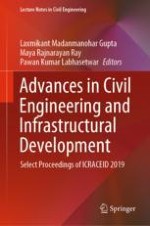2021 | OriginalPaper | Chapter
Biosorption: Principles, and Applications
Authors : Poonam, Anju Rani, Pradeep Kumar Sharma
Published in: Advances in Civil Engineering and Infrastructural Development
Publisher: Springer Singapore
Activate our intelligent search to find suitable subject content or patents.
Select sections of text to find matching patents with Artificial Intelligence. powered by
Select sections of text to find additional relevant content using AI-assisted search. powered by
